My requirements for the digital piano were relatively few: most of the models in the price roughly SGD1.5K to 2K bracket were all offering pretty decent sound, so the quality of the piano sampling wasn’t of particular concern.
Rather, the two requirements I had for this purchase was: firstly, the floor space it would take up. The piano would be fitting into a cavity in our master room, and had to be no wider than 1.45m. Also, no deeper than 45cm – and in both cases, the less wide/deep, the better.
Secondly, the piano would need to be able to directly output the recorded audio in 16 bit WAV format files and onto a flash-drive. Most of the highest-tier models will offer this, but many models at this price bracket did not. Bummer. It’s still possible of course to record audio via Line Outputs to an recording device, but I’ve always felt that there might be signal loss from the quality of audio cables used – and hence that wasn’t my preferred solution. The models I looked at included the Kong G1 Air, Yamaha Arius YDP163, Yamaha Clavinova, Casio AP470, and the PX870. Of this lot, the PX870 supported WAV recording to flash drive, and it was relatively light in weight as an added bonus – which meant we could move the unit out of the way for cleaning.
Interestingly, the prices in stores here for many digital pianos don’t seem to deviate much at all: they’re all listed at recommended retail prices. For the PX870, it was SGD1,799. As luck would have it – Lazada was having its birthday sales last week, and several piano stores were offering discounts off products in their range. Without hesitation, I ordered one – and with a 10% discount, the price I paid for it was SGD1,623. The store checked back to confirm the purchase and arrange delivery: and by mid-afternoon, it was all set-up in the master bedroom.
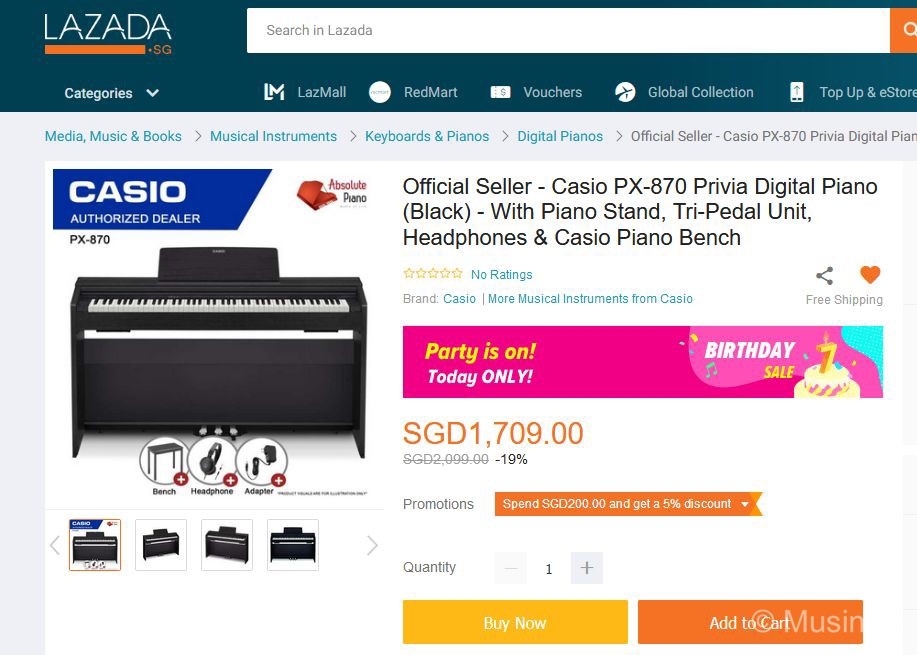
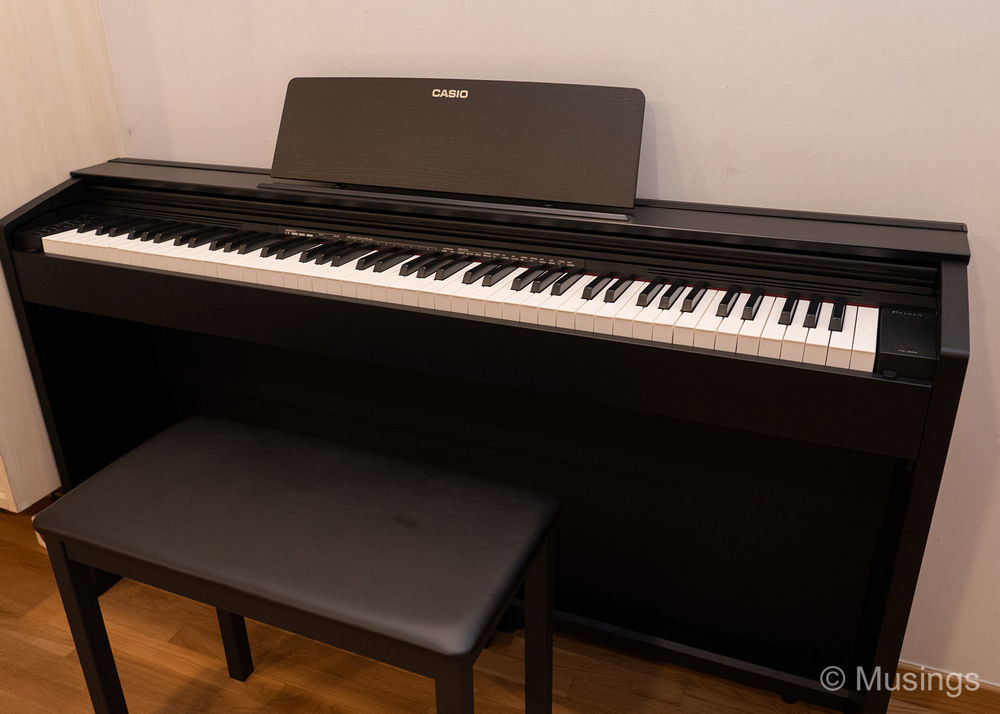
We’ve had the Casio PX870 for just over a fortnight now, and I’ve done close to about 30 hours of recordings so far. The short version of my notes: it’s mostly all good but with some oddities!
The recommended retail price of SGD1,799 in Singapore is much higher than the US’s list price of USD999 – and with less warranty to boot too – 1 year against 3 years. /sad. I got it at SGD1,623, thanks to Lazada’s birthday discount, and there was an additional SGD120 shopping vouchers that came with it – think it was a seasonal offer.
The PX870 fits perfectly into our bedroom cavity – hooray! And at 34.6kg, it’s one of the lightest digital pianos in this price-range. It’s stable enough that accidental knocks won’t push it out of the way, but yet light enough for us to move it out of the way for spring-cleaning.
The most critical feature of a digital piano isn’t its output audio, but its hammer action – and this is particularly true if you’re still learning. The keys on digital pianos are typically lighter in touch than acoustic pianos, which meant that I had more restrained when on the keyboard and not pound away as I can on an acoustic piano. This was quite a change I’m still trying to adjust towards. Even two weeks later of recordings, there are still numerous spots in a recorded piece where I play a note harder than I intend to.
The 16 bit WAV audio output is really good: pristine and distortion free, with good channel separation. Just for fun, I tried the recording output from the Line Out port, and it was a wreck: recording volume was extremely high – haven’t figured out how to reduce it – and quickly peaked at even the relatively sedate segments of piano pieces. There’s probably some way to correct this in sound editors like Audacity, but it just wasn’t worth the hassle for me. The challenge of course is that recording video and audio separately means both need to be synced back in a video editing tool like Adobe Premiere: but the resultant video is worth the effort. I’ll post up some samples in a later post.
The three grand piano types included in the PX870 are marked as ‘concert’, ‘mellow’, and ‘bright’ – though the actual piano itself, e.g. whether a Steinway & Sons grand, is not specified. Not that it finally matters for non-professionals like myself. I reckon since Casio does not make their own grand pianos – or even acoustic pianos as far as I know – they’re able to use any grand piano for sampling. Of the three, all sound good. Though I’ve found using the ‘bright’ produces the best results for recording purposes.
The absence of an LCD display screen means that changing settings is clunky. Typically, you have to use combination keys: e.g. holding down the Function button on the left console panel and tapping the appropriate keyboard key. The difficulty of course is that the line of text associating keys to function are in pretty small type face and thus hard to read. Thankfully, there’s an accompanying Casio app called Chordana Play for Piano on Google Play and Apple iTunes store that lets you configure the piano as you need. The app reliably connects to the piano in either version, but the Google Play version of the app also crashes repeatedly on the Samsung Note 9. It works flawlessly on my iPad Pro 11 on the other hand.
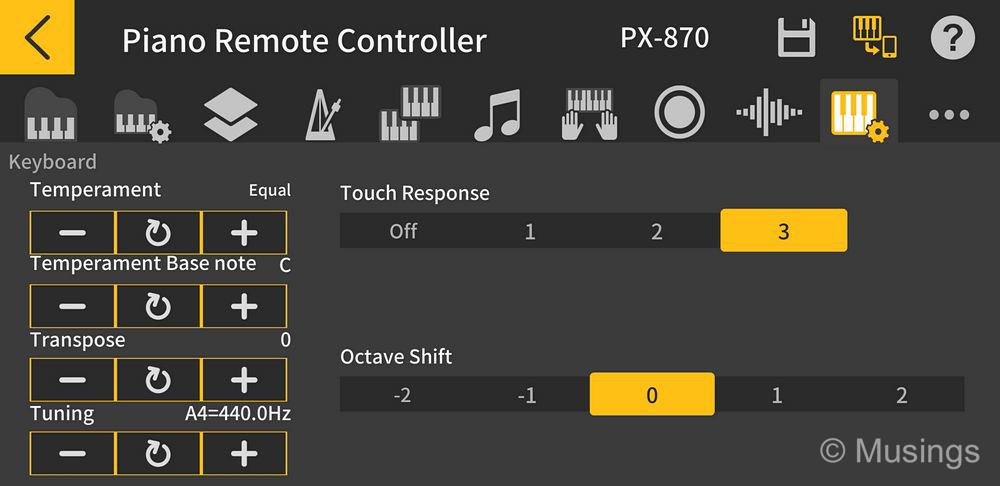
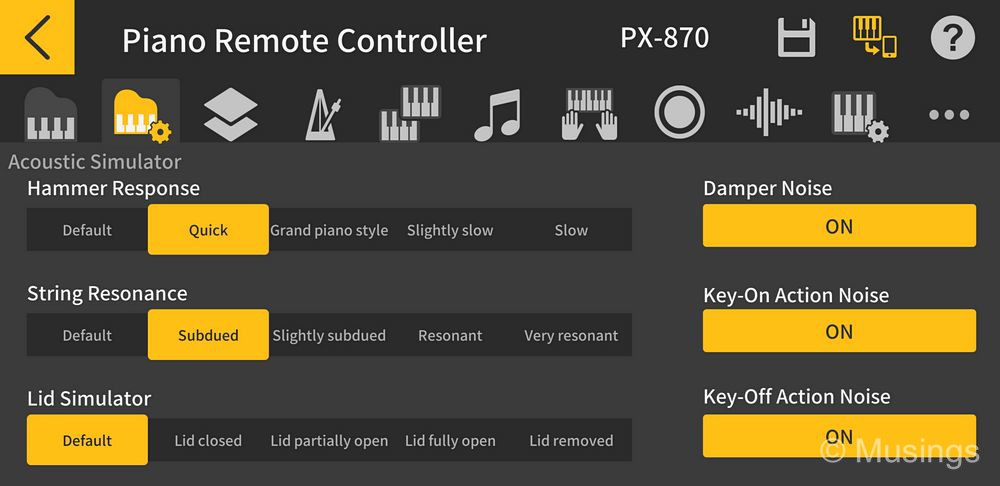
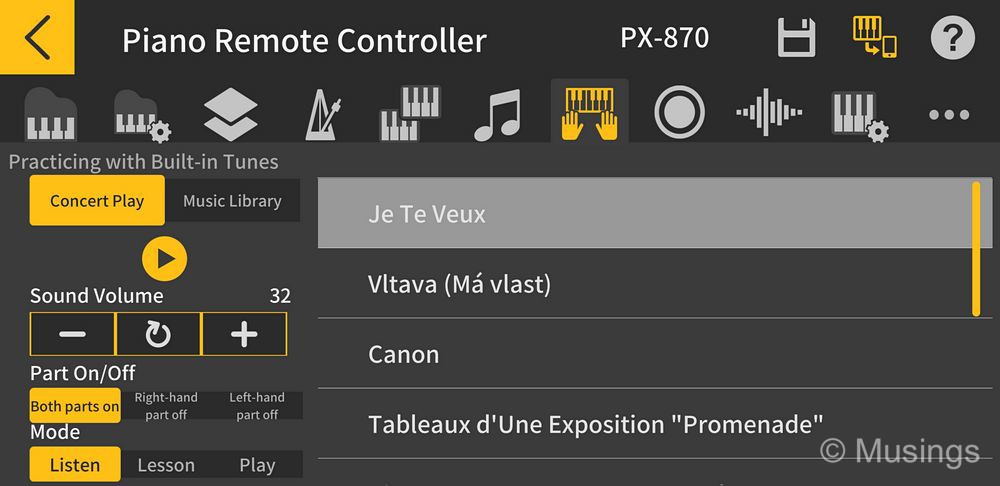
The PX870 does not support wireless or Bluetooth connectivity to the Chordana app though. It uses a USB-B port. Ugh – besides printers, who uses that port standard. Luckily, these cables were fairly easy to find in the larger electronic appliance stores.
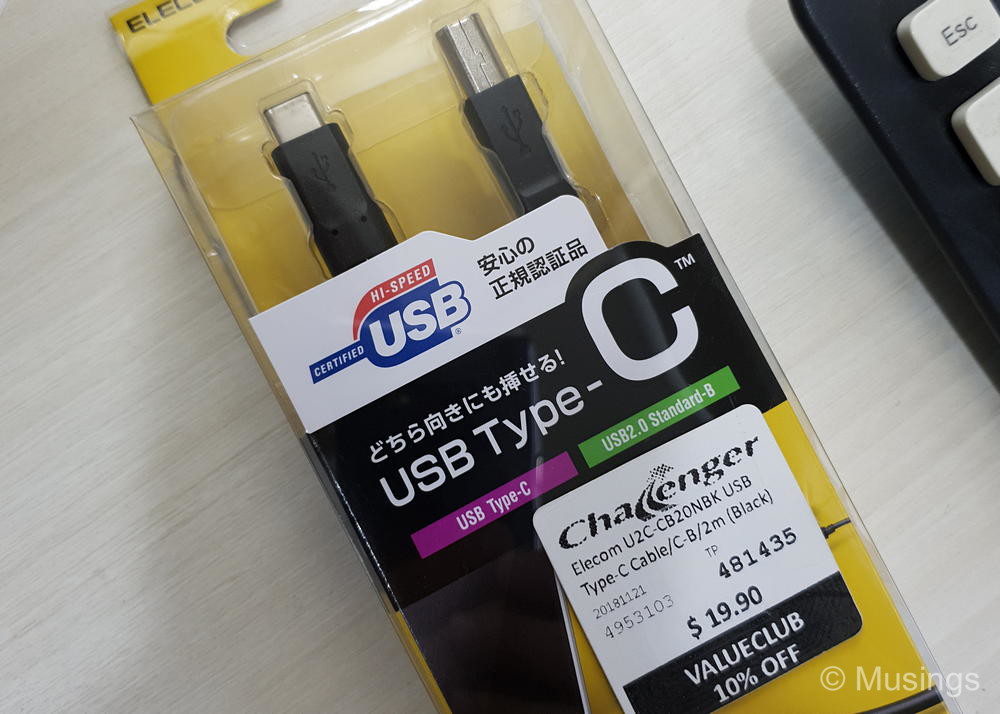
The piano has a 40W sound system. I initially thought that that would be enough to blow out my ear-drums. But oddly, when I turn the volume knob to maximum, the piano is just… adequately loud. In fact, the volume level is roughly lower than the thunder I can create on our Yamaha upright if I hammer my octaves away.
The supplied piano bench is quite plain and totally not height-adjustable. More serious is the thin cushioning provided – it’s just not comfortable to sit on for long periods. I’m going to throw this one out and get a better piano chair.
So, I’m pretty stoked with this new piano, and I’ve recorded close to about 60 pieces now over the last two weeks. The wife just quipped though that I hardly ever touch our Yamaha upright anymore: but I assured here that I’ll be going back to our Yamaha soon enough – once I finish my planned series of recording the pieces I’ve been playing these 2 years now – should be at around 80 to 90 thereabouts for this current cycle!
Recent comments